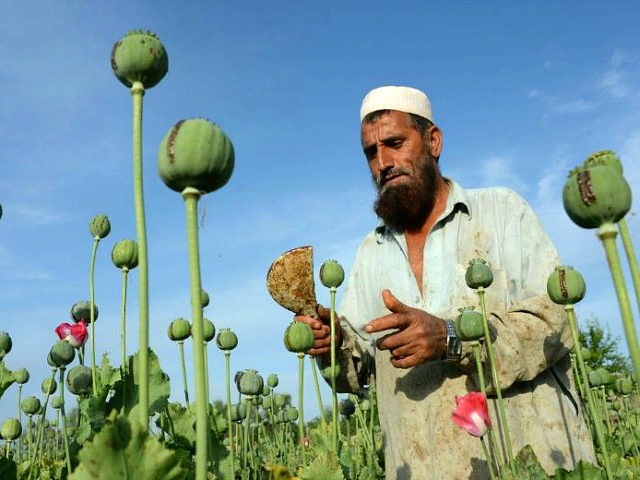The U.S. Embassy in Afghanistan, the capital of the world’s top producer of opium and its heroin derivative, has fired at least six employees for allegedly using and distributing drugs.
“In this case, all personnel who were found to have been using or in possession of prohibited substances were removed from the contract and no longer work at the U.S. Embassy in Kabul,” a State Department official told the Wall Street Journal (WSJ) on condition of anonymity.
Which drug or drugs the embassy personnel were allegedly involved with remains unclear.
However, describing what appears to be a person under the influence of an opiate, the WSJ reports, “Embassy personnel said the investigation was launched after staff noticed one person wandering around in a state of confusion and appearing to be intoxicated.”
BBC learned from unnamed Afghans who have worked at the embassy that the use of hashish by local and foreign staff is common.
Not all, but most of the employees fired from the embassy, a component of the U.S. State Department, were reportedly American.
It is unclear whether the employees will face any legal repercussions.
“The embassy personnel who were fired included those working as contractors for the security company Aegis Worldwide, a subsidiary of GardaWorld, a person familiar with the investigation said. The Aegis website refers all media inquiries to GardaWorld, whose executives didn’t respond to an emailed request for comment,” notes WSJ. “GardaWorld is one of the biggest security companies in Afghanistan and is based in Canada, according to its website.”
The DEA has acknowledged that the vast majority of heroin in Canada originates in Afghanistan.
Since the war against terrorism began in Afghanistan more than 15 years ago in October 2015, the U.S. government has spent $8.5 billion in American taxpayer funds on counternarcotics effort.
“Nonetheless, Afghanistan remains the world’s leading producer of opium, providing 80% of the global output over the past decade, according to the United Nations,” reports the U.S. Special Inspector General for Afghanistan Reconstruction (SIGAR), a watchdog agency.
Moreover, estimated opium production in Afghanistan skyrocketed to 4,800 tons in 2015, 25 times more than when the United States invaded the country in 2001.
SIGAR reported in December 2014 that some U.S. taxpayer-funded reconstruction efforts, “such as improved irrigation, roads, and agricultural assistance,” were being used to cultivate opium in Afghanistan.
Unfortunately, the recent incident is not the first time that American personnel in Afghanistan has been caught using illegal drugs.
Two U.S. air-traffic controllers were found dead last year from what appeared to be heroin overdoses.
Furthermore, some U.S. soldiers in Afghanistan have been investigated “on suspicion of using or distributing heroin, morphine or other opiates during 2010 and 2011,” the Associated Press (AP) reported in 2012.
Breitbart News has analyzed Pentagon data that shows the number of U.S. service members testing positive for heroin has increased throughout the course of the war in Afghanistan.
Some analysts, such as scientist and author William Edstrom, deny the DEA claims that only about one percent of the heroin in the United States, where it is fueling one of the worst deadly drug epidemics in history, comes from the Afghanistan-Pakistan area.
Referring to the DEA claim that most of the heroin in the U.S. comes from Latin America, an article on the heroin surge noted in September 2015:
Perhaps heroin shipments from Afghanistan are at lower risk of being seized than heroin coming from Latin America. Might some be entering through government channels, when so much materiel and so many personnel (soldiers, aid workers, diplomats, and contractors) fly directly between the US and Afghanistan?
Putting aside the issue of the provenance of the US heroin supply for the moment, surely we can look at heroin as we would any other global commodity.
Citing a September 2015 report from the WSJ, the article points out that U.S. “friendly fire” in top opium-producing southern Afghanistan “hit a 30 member elite counternarcotics police unit as they were on a mission.”

COMMENTS
Please let us know if you're having issues with commenting.